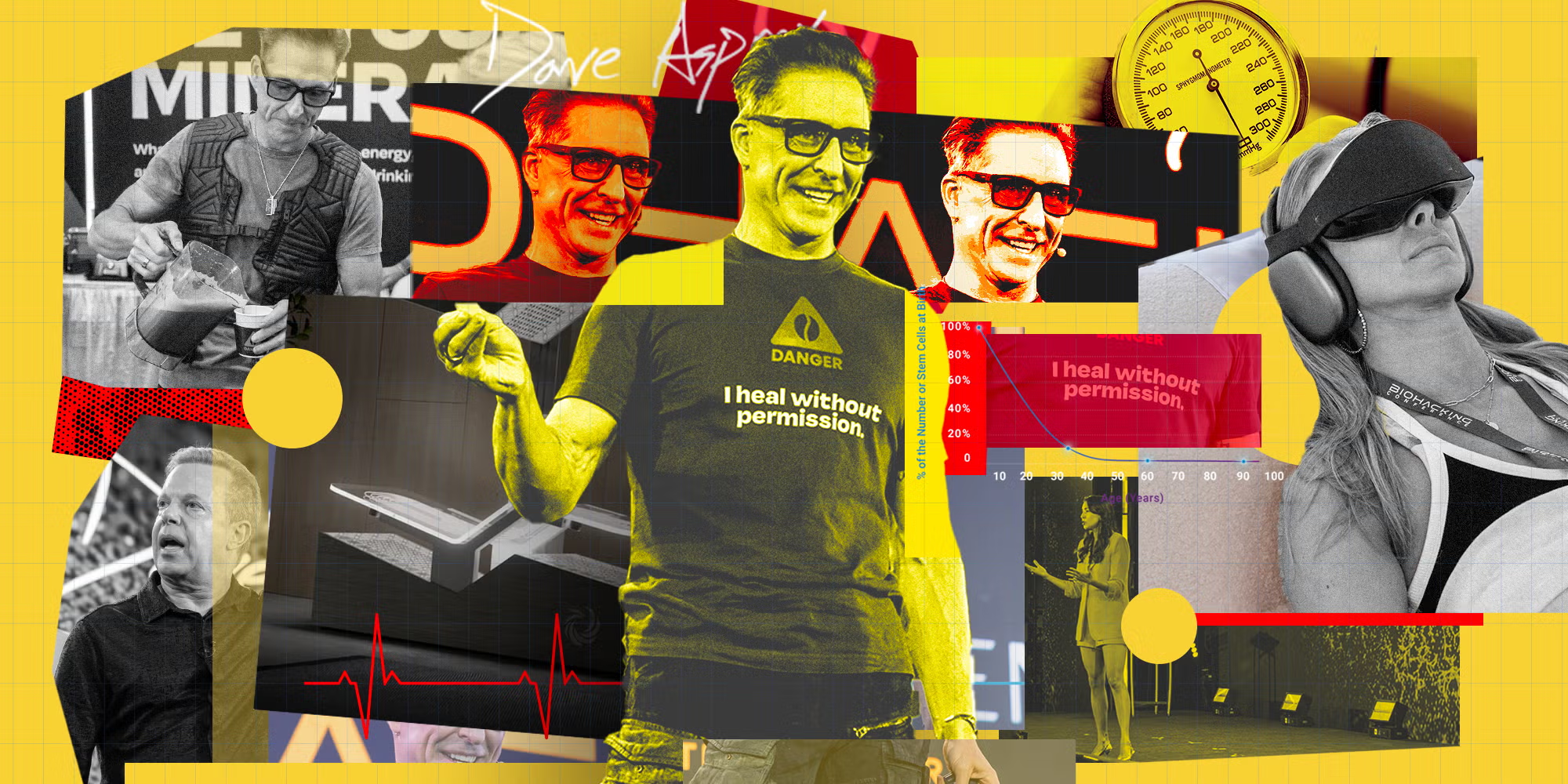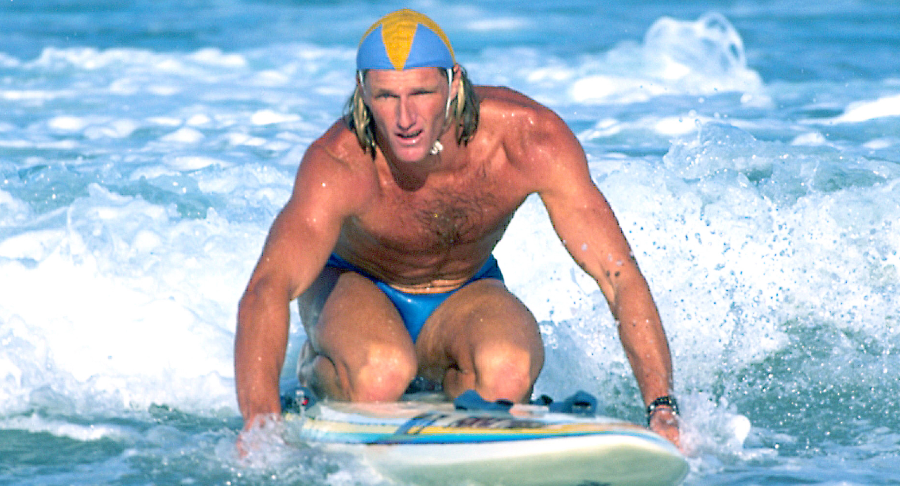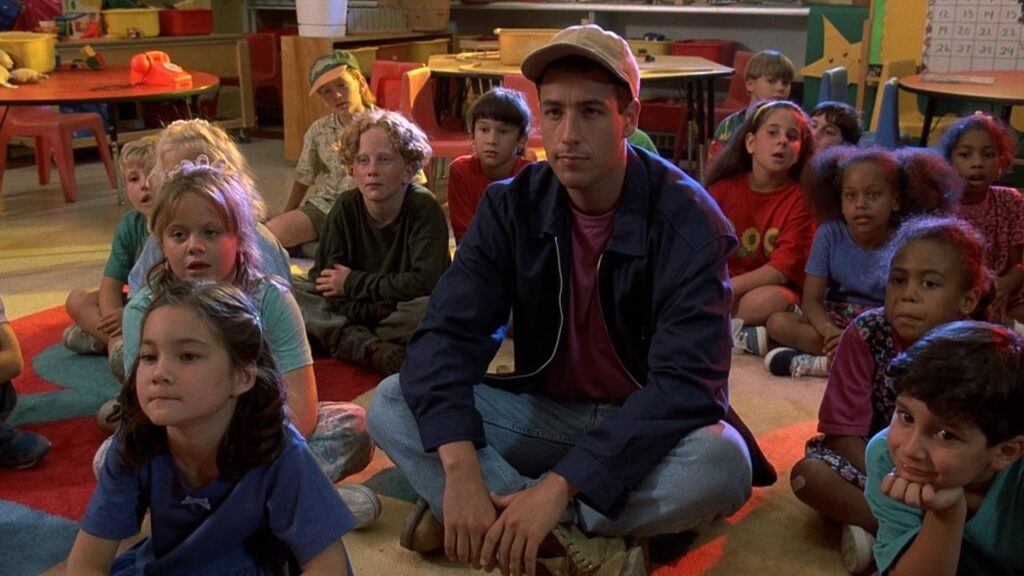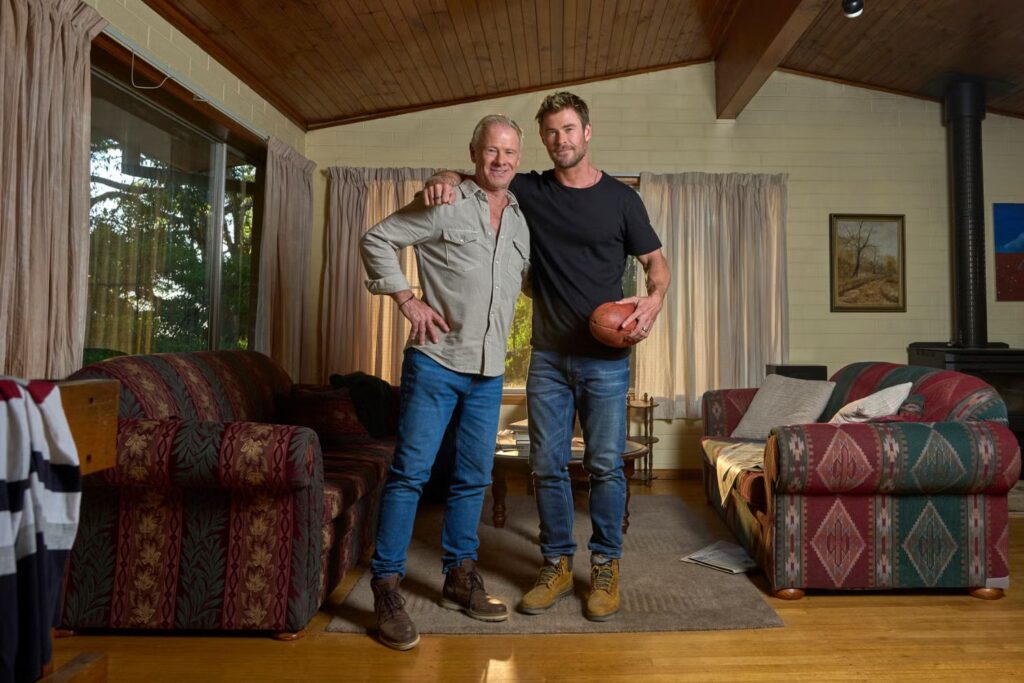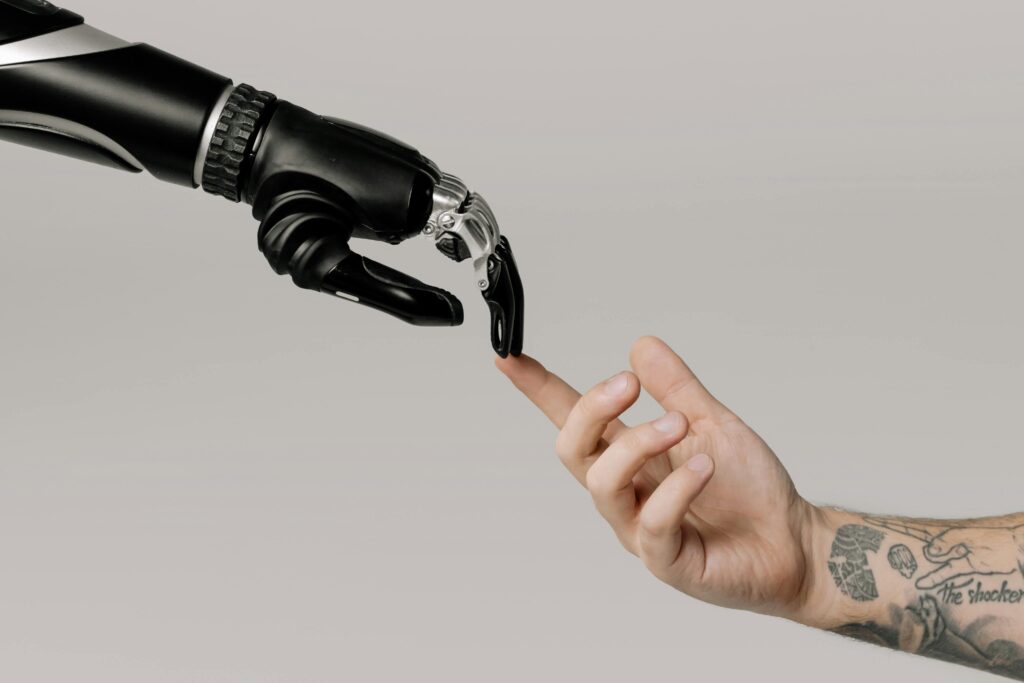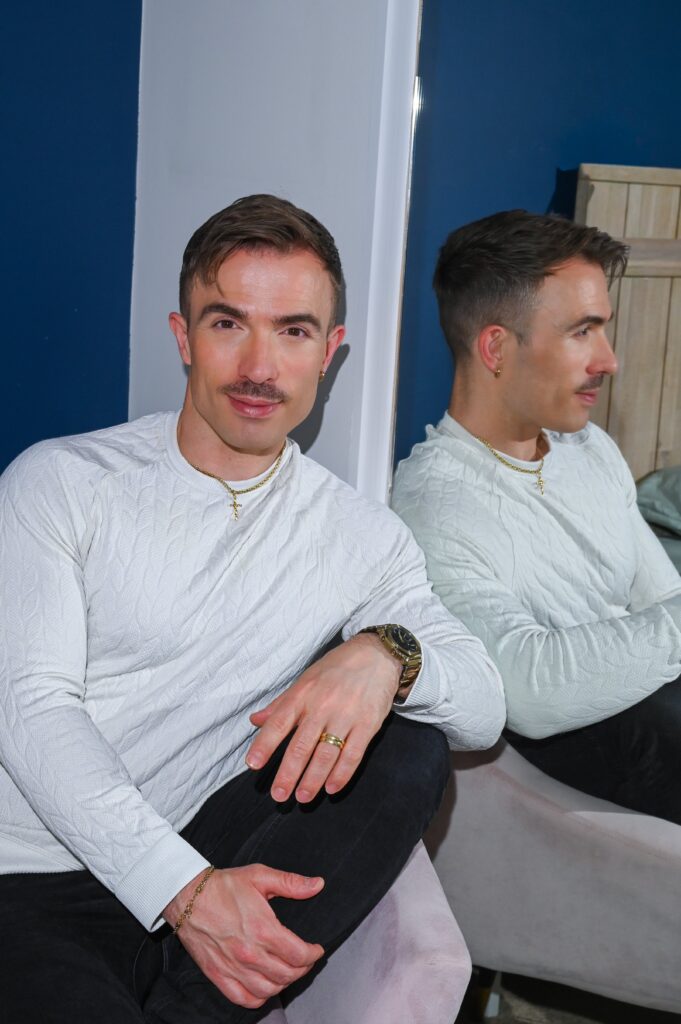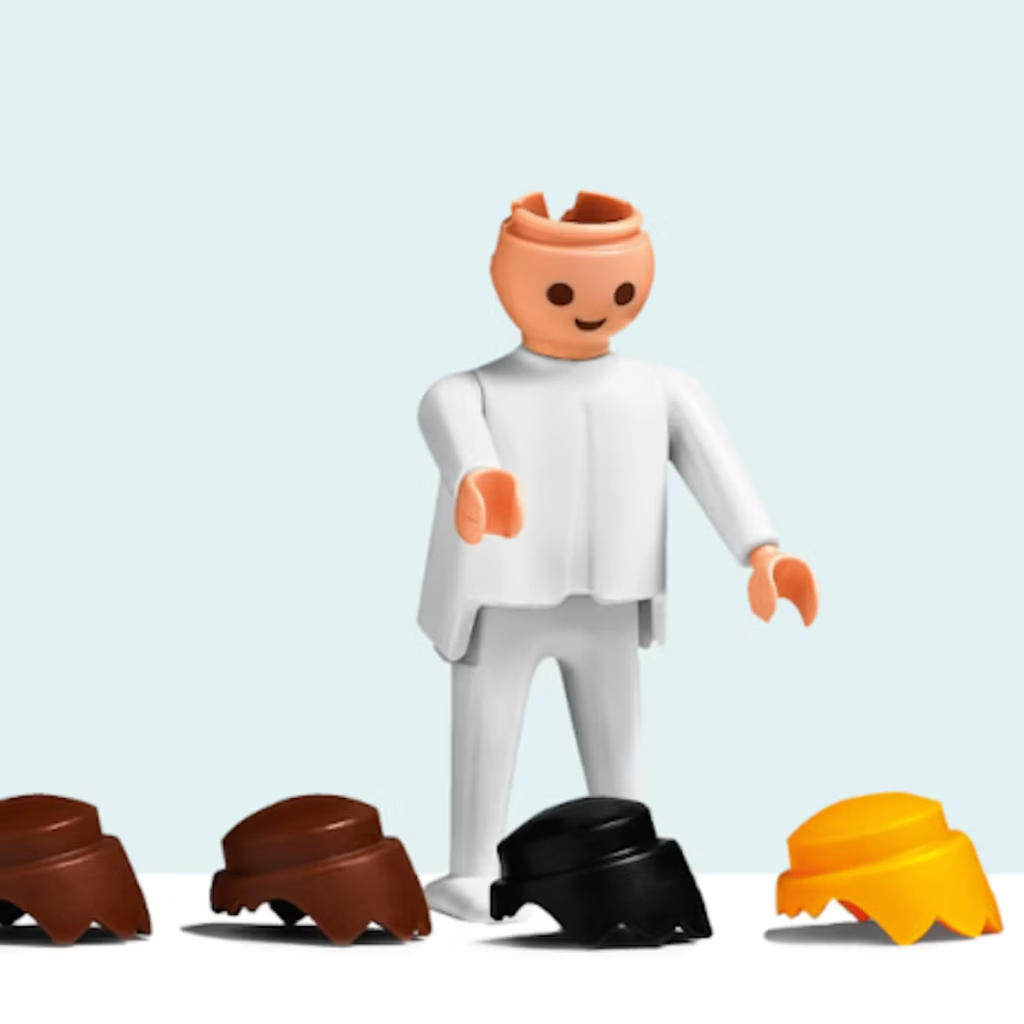I DIDN’T ATTEND Dave Asprey’s 2025 Biohacking Conferencec in March on a quest to live to 180, as the man himself once claimed he would. I came because, like any social media user whose algorithm slants wellness, I’d seen Asprey’s reels about moldy coffee, oatmeal as a nutrient-sucking “peasant food,” and the many evils of seed oils. And, as a dietitian, I’d heard some variation of this stuff from my clients. Asprey, once a novelty in the biohacking and self-experimentation space, has managed to elevate his message to normies.
It hit me all at once, walking into the Fairmont Hotel in Austin on day one of the conference: Oh, this is a big deal. Four-thousand people had paid upwards of $2,500 to attend the three-day event. The energy felt like the hour before a professional sports game—exciting, even electric. Attendees swarmed booths featuring sound baths and light therapy beds. Selfie-sticked influencers gravitated to a recovery chamber that cost a cool $159,500. There were seminars on mindfulness, longevity, and “unlocking biology with precision laser therapy.” Keynotes included Joe Dispenza, a chiropractor who YouTubes about mind-reprogramming and Vani Hari, a blogger-turned-MAHA-champion you might know as “The Food Babe.” Oh, and a DJ set from Steve Aoki.

Joe Dispenza on stage at Dave Asprey’s 2025 Biohacking Conference.
Although this was the 10th anniversary of Asprey’s conference, he’s credited as starting the biohacking movement back in 2004. And, somehow, it felt like his message of living forever and loving it was just starting to build force velocity. I was skeptical and had questions for Asprey, whose people had allotted me some time with him early morning on the second day of the conference.
Namely, if we now live in a world where every wellness influencer calls themselves a biohacker, has the movement moved beyond its maker?
But first, I had a $159,500 chamber to check out.
The future is now
Walking the multiple floors of the Tech Hall, the convention’s showroom floor, was like stepping into a sci-fi prop closet: cryo tanks, vibration beds, red light lasers, a contraption that gives live liver scans while telling you your biological age. Did I see a real-life Iron Man MK7 suit? No. Would I have been surprised if I did? Also no.
That $150,000 rig was called the Ammortal Chamber, and it leverages guided breathwork, pulsed electromagnetic fields (PEF), red light, sound, and vibration to “reset” your nervous system. After 30 minutes inside, I felt calm, present, oddly clear, and ready to rock. (Wait, maybe this was an MK7 Suit?)
For every tech-centered booth, there was at least another trying to sell me on the benefits of a cutting-edge supplement. Timeline Nutrition was advertising a line of softgels, priced at $112.50 for a month’s supply, and creams that contained Urolithin A, a mitochondria-supporting molecule that may have the power to boost cell energy, increase strength, and improve endurance. (“If your mitochondria aren’t working … your battery’s dead” Ian Davidson, Timeline’s VP of Brand Marketing, told me.) Stemregen marketed supplements starting at $134 per bottle for stem cell support. (“Stem cells are the new multivitamin,” said their founder, Christian Drapeau.)

The $159,500 Ammortal Chamber is a device that restores, rejuvenates, and enhances the body, mind, and spirit, according to its press materials.
Many of the attendees I talked to seemed genuinely intrigued by all this stuff—and invigorated by their promise. Nick Zaldastani, a Silicon Valley investor turned self-described “mentor capitalist,” told me he got into biohacking after watching both his parents suffer through years of immobility and pain. “That’s not the life I want,” he said. “When I met Dave [Asprey] in 2016, I saw what this space could be. [Now] the buying power of this community is massive. Companies I would’ve called mom-and-pops five years ago are now backed by Andreessen Horowitz and Wall Street because they know this is critical to our future.” (He’s right. The projected market size of the biohacking industry is expected to reach $113.9 billion by 2033, according to a report by Straits Research.)
When I asked people what they were chasing, I didn’t hear words like “optimization” or “mitochondrial efficiency.” Instead, I heard: Clarity. Healing. Focus. Control. They weren’t just here for the next big wearable. They were here because traditional healthcare had failed them, or because they were tired of feeling foggy, wired, and wrecked. This wasn’t just a lifestyle crowd; it was a pipedream crowd, a mix of the curious, desperate, and defiantly hopeful. And maybe that’s what makes biohacking sticky. It sells you on the science (some better than others), but it moves you with possibility.
The fact that people were taking action—even if that action was attending a conference—would have been inspiring to me had it not been for the amount of misinformation I encountered. I listened as people praised controversial figures like anti-vaccination activist Del Bigtree, raw-milk advocate Callie Means, and the pseudoscience-slinging Vani Hari, as well as hyped the documentary Toxication, produced by MAHA Films. “Seed oils were created for machinery back in the ’50s,” one event attendant told me. “We can’t digest them. You try going seed oil-free for a month, you’ll feel it.” (Dude, I’m a dietitian, and you’re wrong.)

Vani Hari, aka “The Food Babe,” speaks at the conference.
I’d been expecting some level of distrust and disbelief in Western medicine at the convention, but some of the “experts” and speakers sounded like the online pseudoscientific community IRL. Whoever could say (or sell) the wildest thing tended to draw the most attention.
But, after all, isn’t that how Asprey got his start? You want me to put butter in my coffee?
The origin of hacking
The Dave Asprey story bears a striking resemblance to the first 20 minutes of almost every Marvel movie. As Asprey tells it, in 1999, he was a 26-year-old tech/start-up guy battling weight gain and brain fog. Then, in 2004, he traveled to Tibet, where he visited Mount Kailash and drank yak butter tea, which helped him lose weight, regain energy, and rejuvenate his life and career.
Yak butter tea became his inspiration for Bulletproof Coffee, a cup of joe blended with MCT oil and grass-fed ghee. The craze took off, popping up in news reports, morning shows, and late-night interviews. The trend spurred a line of branded Bulletproof coffees, supplements, and a bestselling 2014 book, The Bulletproof Diet. By 2019, Asprey sold his company, Bulletproof 360, Inc., but stayed relevant through media appearances, a steady cadence of book releases, and his podcast, The Human Upgrade, which has 75 million downloads.

Dave Asprey pours Danger Coffee for conference attendees.
When I finally sat down with Dave Asprey, he looked exactly like someone who spends his days between cold plunges, functional mushrooms, and tech-enhanced meditation. Tight black leather pants. Amber-tinted light blockers. A T-shirt emblazoned with Danger Coffee, his newest coffee brand. Hair slicked-back, lean—not jacked—but dialed in, like someone who knows his cortisol levels before breakfast.
Now 52, Asprey splits his time between Austin and Victoria, British Columbia. He has two teenage kids from a previous marriage. He’d just published his newest book, Heavily Meditated, which focuses on mindfulness, emotional regulation, and what he now calls “conscious biohacking.”
“I am so incredibly stoked,” Asprey told me. “This is what [the movement is] supposed to do: grow, expand. When we’re done, people will just know: If I don’t like my state, there’s a tool to change it.”
Asprey still talks like someone who came up in tech. Rapid-fire, energized, self-aware enough to know his ideas trigger some folks; proud enough to lean in. But he also carries the weight of a man who’s walked through inflammation, chronic fatigue, brain fog, and come out the other side with tools he wants to share. “The things that make old people young,” he told me, “make young people powerful.”

Attendees try out one of the many (many) devices the conference had to offer.
He knows the biohacking movement has commercialized, and he’s unapologetic about it. “You have to commercialize. That’s how you scale. There was no such thing as mold-free coffee or functional collagen until I built it. Now, functional coffee is a billion-dollar market. That’s what entrepreneurs do: We build what didn’t exist.”
Even his concept of performance has evolved.
“Biohacking used to be about butter and caffeine. Now it’s about consciousness. Longevity. Awareness. That’s why I wrote Heavily Meditated. It’s the book I couldn’t have released 20 years ago. But it’s the one I had to write now.”
He paused, then added one more idea.
“We’re writing the instruction manual ourselves. That’s the point. No one’s going to give us permission. Not a doctor, not a regulator, not even our parents. You want to change your state? You get to. That’s sovereignty.”
The end of the show
As the convention wore on, so too did my willpower for nonsense. One rep at a hyperbaric chamber booth told me without flinching that it had been “shown to cure autism.” Others pitched infrared saunas with near-magical detoxification benefits for $2,500-plus. The vibe grew less healthy and more hustling, although that was probably my science-centric brain growing weary.
While I was somewhat uplifted by the companies doing real work—brands that conducted human trials, earned their NSF certification, and translated science into something that matters—I kept wondering: Who is this movement really for?
Changing your state often comes down to means. Pricey supplements. Devices that cost as much as a house. Just to get in the door of the convention, you needed a $2,500 ticket. Asprey might argue that Heavily Meditated costs only $17 and offers an entry point into human performance that doesn’t require big money. But what comes after the entry point is often the upsell.
Part data-obsessed futurist, part self-help sage still writing about mitochondria like they’re gospel, Asprey has been a polarizing force within the wellness world for more than a decade. For some, he’s the north star of a revolution. For others, he’s a savvy marketer riding the edge of what’s credible. But what’s undeniable is this: As a leader, he’s lit a path.
It’s up to the rest of us to decide if we want to follow.
This article originally appeared on Men’s Health US.
Related:
Longevity Medicine Institute is bringing high-tech anti-aging guidance online




